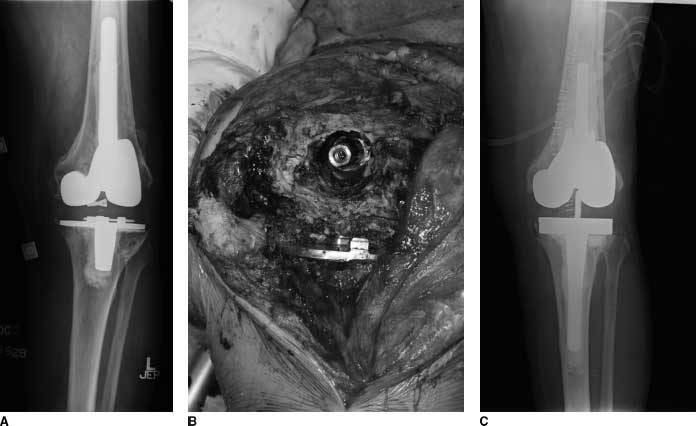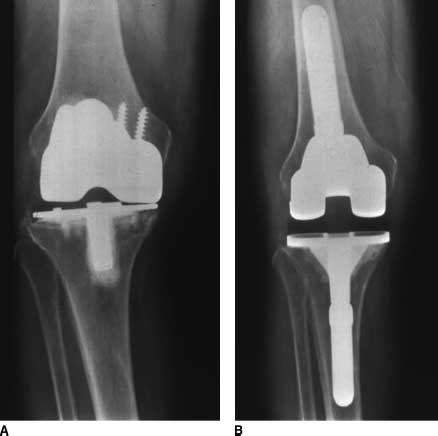FIGURE 49-1. (A) Preoperative and (B) postoperative radiographs after revision TKA with cemented stems.
At our clinic, short cemented stems are commonly used in conjunction with uncemented metaphyseal cones (Fig. 49-2). Surgical technique involves plugging the canals, retrograde filling the canals, routine antibiotics in the cement, and making sure the cement does not get in between the uncemented cones or sleeves and the bone.

FIGURE 49-2. A: Preoperative AP radiograph of failed revision TKA with broken stem and locking bolt. B: Intraoperative photograph. C: Postoperative radiograph with short femoral stem and femoral cone.
If press-fit stems are utilized, it is important to get diaphyseal fixation and fill the canal with the stem (Fig. 49-3). If using uncemented stems, the initial steps are to ream until endosteal contact is made and use cutting jigs attached to the reamer to ensure proper alignment. Once bone preparation is done, intraoperative radiographs with the trials in place are obtained to assure proper alignment and implant choice.

FIGURE 49-3. A: Preoperative AP radiograph of a failed TKA with severe poly wear. B: Ten-year postoperative radiograph of revision TKA showing good fixation with press-fit stems and cement at the distal femur and proximal tibia.
Results
Stay updated, free articles. Join our Telegram channel

Full access? Get Clinical Tree








